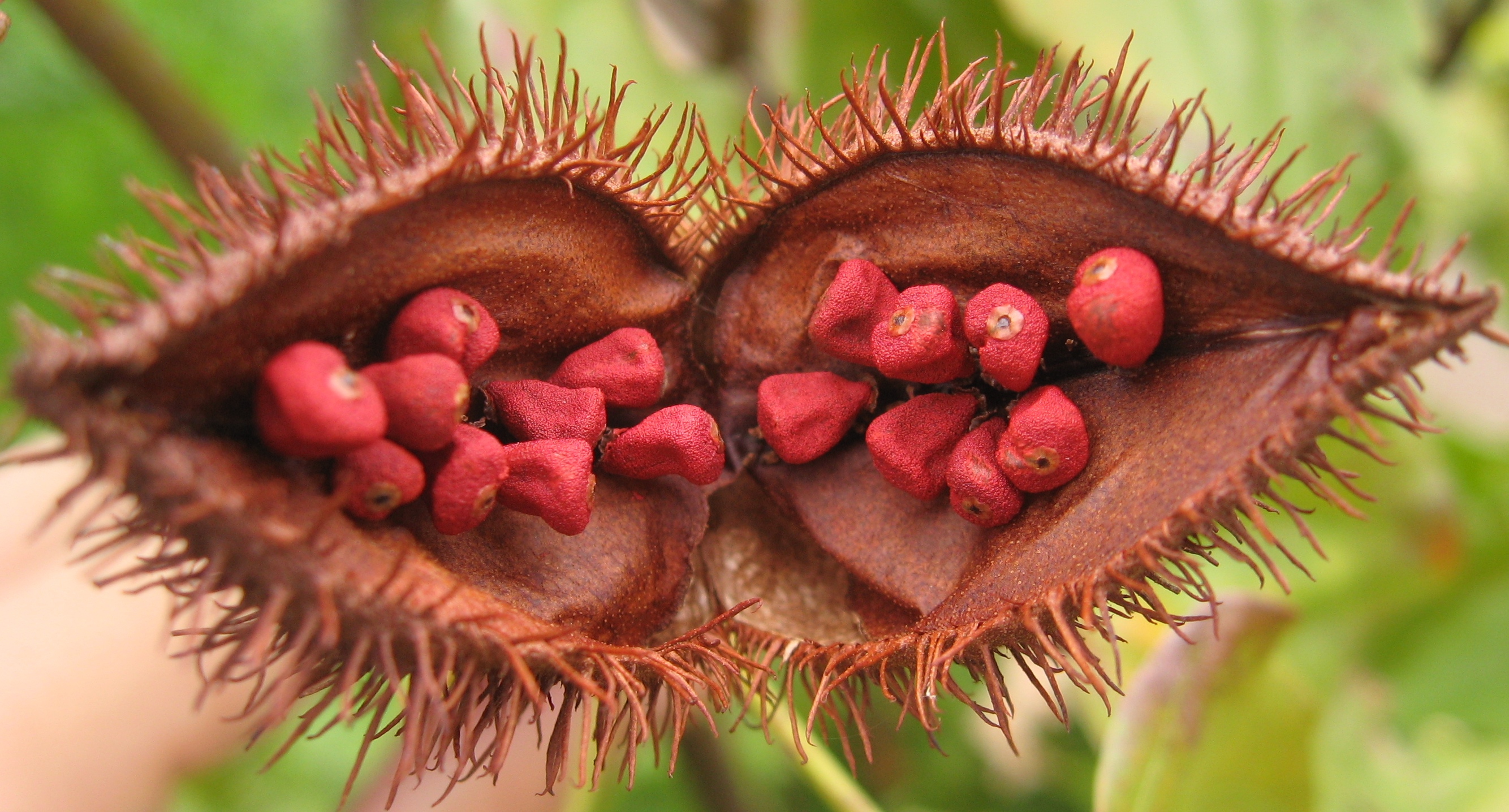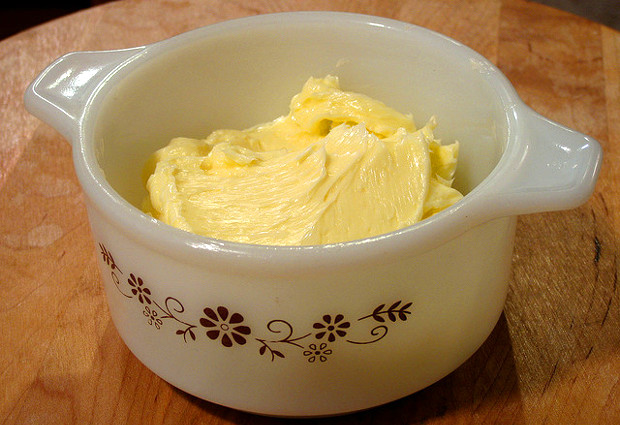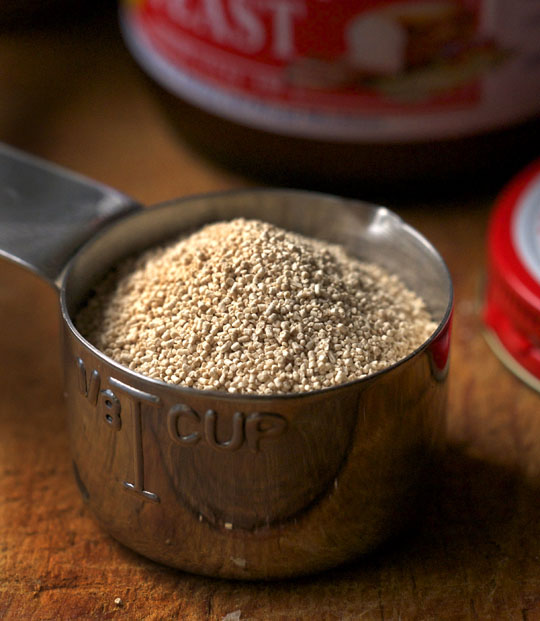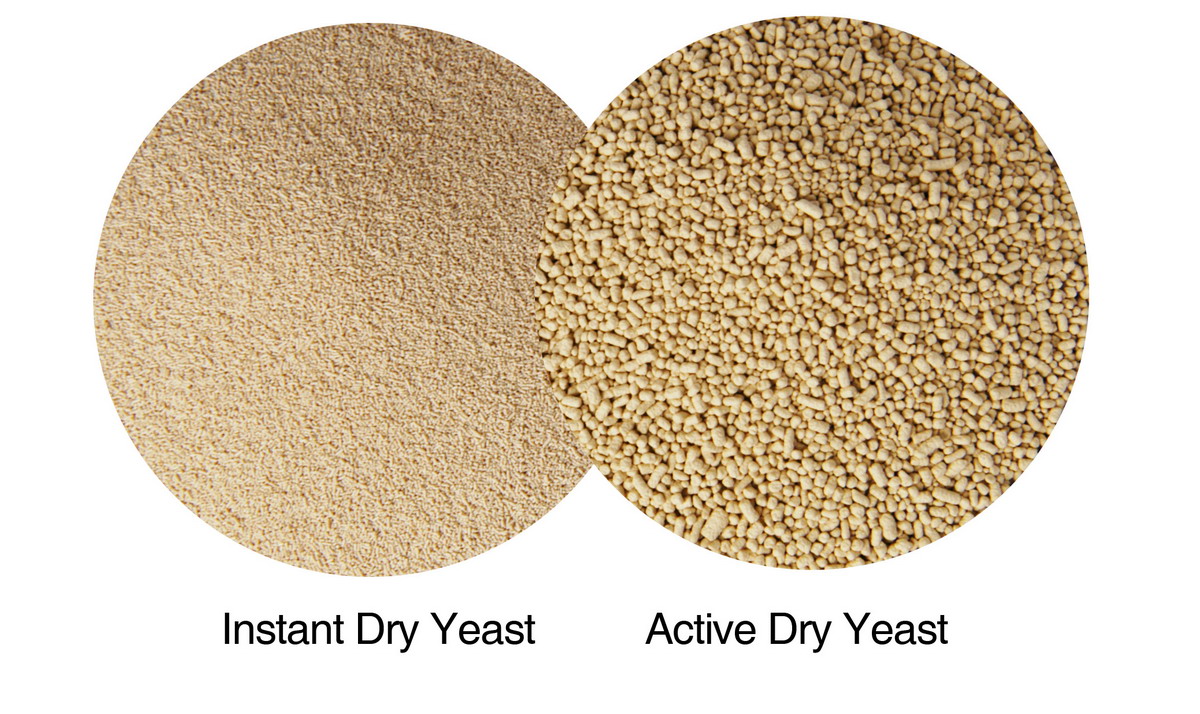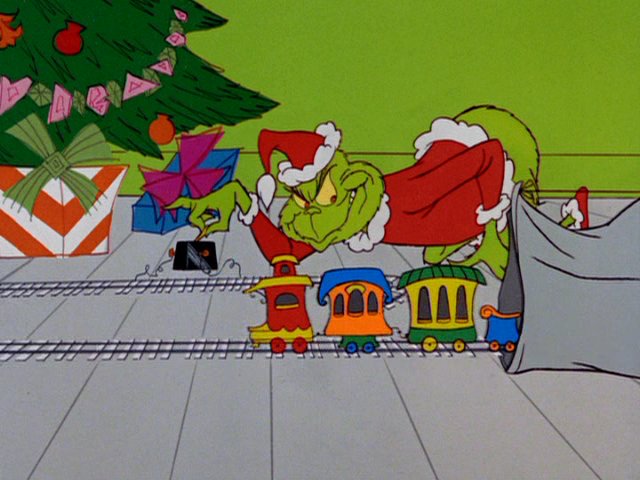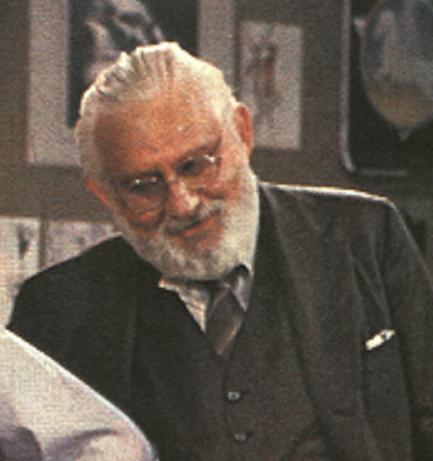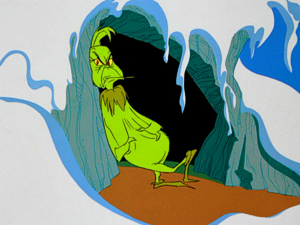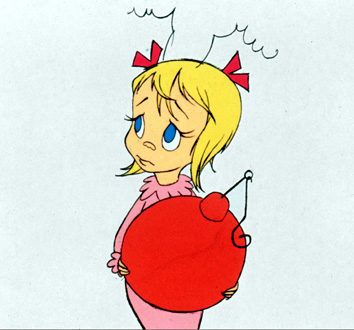You may recall that in a previous entry, we looked into the origins of the "shame on you" gesture. Now we have another gesture to explore: giving someone the finger. Middle, that is.
This one comes as a request from regular Daily Apple reader Majondra who would like to know the origins of "flipping the bird." I suspect this will be another one of those "nobody knows" sorts of things, but I will do my best. I'll also see how many different ways of describing this gesture I can come up with.
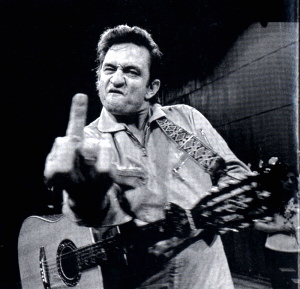
So many images of celebrities giving the finger have clearly been Photoshopped. This one, by gum, has not.
(Photo from Johnny Cash Gives You the Finger)

One of the North Koreans' photos of some of the crew of the USS Pueblo. Can you spot the bird being flipped?
(Photo from the USS Pueblo Digit Affair)
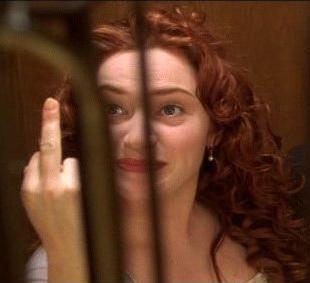
Rose hailing Lovejoy
(Screenshot from fanpop!)

Here's the group photo. The guy in the back left is, um, gesturing in a singular fashion.
(Photo from Wikipedia)

In case you can't see, here's a close-up.
(Photo from SB Nation)

Plate from Bulwer's Chirologica, demonstrating the convicium facio.
(Image from Dr. George Pullman's Canons of Rhetoric)

A gif made to look like a plate from some book supposedly from 1415 that is demonstrating the entirely mythological "pluck yew" tale.
(Image from Lilolia)
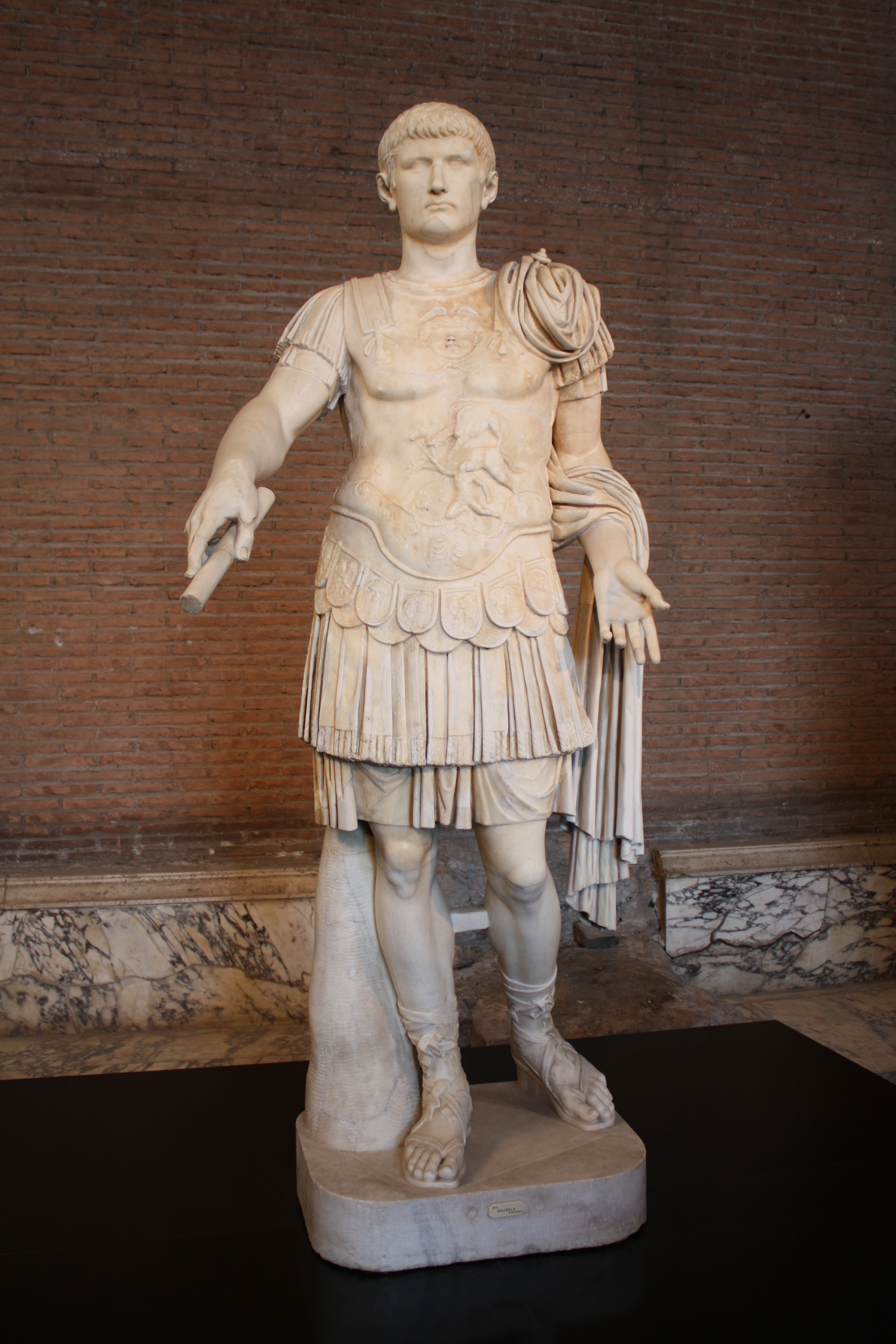
Statue of Caligula. You can practically hear him saying, "Kiss it. Go on, kiss it!"
(Photo from United we stand)

Greek philosopher Diogenes (412 BCE - 323 BCE), who rejected all sorts of niceties of society, lived in a jar or tube, spat on people, masturbated in public, and was a fan of giving people the finger.
(Painting of Diogenes by John William Waterhouse, from Wikipedia)

(Photo from somewhere on StrangeZoo, but sourced from Cracked)
P.S. Where is Tall Man?
Sources
The Straight Dope, What's the origin of "the finger"?
Daniel Nasaw, BBC News Magazine, When did the middle finger become offensive? February 6, 2012
USS Pueblo
The Finger, A (Short) History of the Longest Finger
Snopes, Pluck Yew
Brian Palmer, Slate, Cluck You: Why do we call giving someone the finger "flipping the bird"?
English Language & Usage, What's the origin of "flipping the bird"?
Mental Floss, Why Is the Middle Finger Offensive?
English Language & Usage, What's the origin of "flipping the bird"?
Aristophanes 1: Clouds, Wasps, Birds, translated by Peter Meineck, p 50
This one comes as a request from regular Daily Apple reader Majondra who would like to know the origins of "flipping the bird." I suspect this will be another one of those "nobody knows" sorts of things, but I will do my best. I'll also see how many different ways of describing this gesture I can come up with.

So many images of celebrities giving the finger have clearly been Photoshopped. This one, by gum, has not.
(Photo from Johnny Cash Gives You the Finger)
- Just to be clear, before I begin, extending the middle finger in the lone, vertical fashion is a concise way to invite the viewer to take a phallic object and insert it in the privatemost part of the viewer's body; to wit, to fuck off.
- It's the definition! I had to say it.
- Now that we've got that out of the way, let's proceed with the business at hand. Ahem.
- Many people have hazarded guesses as to when this gesture originated.
- In 1968, the crew of the USS Pueblo was captured by North Korean forces, and the surviving 82 crewmembers taken as prisoners. The North Korean military took many pictures of the captive crewmembers and circulated them throughout the country as propaganda. The North Koreans also showed propaganda to the US prisoners, one of which was a film that included a shot of a British man gave the finger to the camera. Since the North Koreans didn't seem to understand what that gesture meant, one or two the crewmembers from then on gave the finger to the camera every time their picture was taken for propaganda purposes.

One of the North Koreans' photos of some of the crew of the USS Pueblo. Can you spot the bird being flipped?
(Photo from the USS Pueblo Digit Affair)
- A few months later, Time magazine got hold of one of the photos and in an article explained the true meaning of the Hawaiian Good Luck sign. The North Koreans eventually saw this article, and they subjected the captives to fierce and brutal beatings for a solid week.
- After the servicemen did this in a number of photos, the North Koreans asked what it meant. The servicemen told the North Koreans it was the Hawaiian Good Luck sign.
- (Even though the ship was in international waters, the North Koreans demanded that the captain of the USS Pueblo apologize. Eventually he did, but it took a long time before they accepted his apology as sincere, and after 11 months, the North Koreans released the crew The captain of the USS Pueblo eventually apologized to the North Koreans, and the crew was allowed to cross the DMZ and leave.)
- So when this article was published in Time, is this when the gesture became popular?
- Nope. It's older than that.
- In the movie Titanic (always an excellent resource for historical fact -- not), Rose gives Lovejoy the finger. Is that out of place, or did the the gesture actually originate when the Titanic sank?

Rose hailing Lovejoy
(Screenshot from fanpop!)
- I will stand mute on whether the gesture in the film is out of place. But the hand signal is in fact older than than the Titanic.
- In 1886, for a picture of the then-stellar baseball team the Boston Beaneaters and their rivals the New York Giants, Hall of Fame pitcher Charles "Old Hoss" Radbourn extended his middle digit salute for posterity.

Here's the group photo. The guy in the back left is, um, gesturing in a singular fashion.
(Photo from Wikipedia)

In case you can't see, here's a close-up.
(Photo from SB Nation)
- So is 1886 when the gesture originated?
- Nope.
- Going back 200 years more, a 1644 dictionary of sign language called Chirologica: of the Naturall Language of the Hande by John Bulwer includes the sign for extending the middle finger, and labels it as a "convicium facio", which means "I provoke an argument." The dictionary defines the tallboy greeting as a "natural expression of scorn and contempt."

Plate from Bulwer's Chirologica, demonstrating the convicium facio.
(Image from Dr. George Pullman's Canons of Rhetoric)
- So did the gesture originate in the 17th century?
- Nope. It's older still than that.
- There's a story going around the internet about the days before the Battle of Agincourt in 1415. The story goes that the French, expecting to beat the pants off the British, said they would cut the middle finger off all captured English soldiers, thus rendering it impossible for the captured soldiers to fight in the future. (Because, in anticipating their capture, they were also anticipating their release? or escape?) But the British routed the French. The archers, whose bows were made of yew and the practice of using the longbow was supposedly referred to as "plucking the yew," delighted and slap-happy in their victory, waved their middle fingers in triumph at the defeated French and shouted, "See, we plucked yew!"
- Well, clearly this story is ridiculous. But still, people tell it as if it were historical fact. If you want to see all the reasons why this story is crap, check out Snopes' wonderful debunking of the Agincourt yew plucking nonsense.

A gif made to look like a plate from some book supposedly from 1415 that is demonstrating the entirely mythological "pluck yew" tale.
(Image from Lilolia)
- Even if this tale were true, which it is not, did the gesture originate sometime in the 1400s?
- Nope. It's older even than that.
- In the Roman empire, the Latin poet Martial, in one of his satirical Epigrams that were published between 86 AD and 103 AD, describes a character who is always healthy and therefore has no need of doctors as extending "the indecent finger" at three doctors.
- In fact, lots of Romans apparently engaged in the one-fingered salute because many Roman writers of the day referred to the middle finger as the "digitus impudicus," or the shameless or indecent or offensive finger.
- It was also the practice for the emperor to make his citizens kneel and kiss his hand. Slightly before Martial's time, dissipated Roman emperor Caligula (emperor from 37 AD to 41 AD) used to make the senators who were his enemies kiss his middle finger -- the suggestion being that he was making them kiss his lower one-eyed emperor, if you get my meaning.

Statue of Caligula. You can practically hear him saying, "Kiss it. Go on, kiss it!"
(Photo from United we stand)
- Wow, 37 A.D. That's a long time ago. So did the Romans invent the gesture?
- Nope. It's older even than that.
- Roman historian Tacitus wrote that German tribesmen flashed the impudent finger at invading Roman soldiers. So it wasn't just the Romans who did it.
- It may be that the Romans learned it from the Germans, but it's more likely that they grew up knowing it, as pretty much everyone has, since the oldest known use of the gesture dates from at least 400 years earlier, in Greece.

Greek philosopher Diogenes (412 BCE - 323 BCE), who rejected all sorts of niceties of society, lived in a jar or tube, spat on people, masturbated in public, and was a fan of giving people the finger.
(Painting of Diogenes by John William Waterhouse, from Wikipedia)
- In Aristophanes' satirical play The Clouds (419 BC), one of the characters gives the finger to Socrates. (I mean, how many of us would like to give the finger to Socrates?)
- Here is Socrates being all smarty-pants about poetic meter, and his interlocutor's reply follows:
SOCRATES: Well, to begin with,
they’ll make you elegant in company—
and you’ll recognize the different rhythms,
the enoplian and the dactylic,
which is like a digit.
STREPSIADES: Like a digit!
By god, that’s something I do know!
SOCRATES: Then tell me.
STREPSIADES: When I was a lad a digit meant this!
[Strepsiades sticks his middle finger straight up under Socrates’ nose]
- Well, that is one translation. Here is another, a bit saltier:
SOCRATES: A detailed knowledge of rhythm enables you to socialize effectively in polite company and seem refined and cultured. You'll know about martial modes and dactylic meter . . .
[Strepsiades looks confused.]
Beating the rhythm with your fingers!
STREPSIADES: I know how to beat with my fingers, by Zeus!
SOCRATES: You do? Tell me about it.
STREPSIADES: Well when I was a young lad it was this . . .
[Strepsiades grabs and shuffles his phallus.]
SOCRATES: Gods! You are nothing but a village idiot!
- So apparently, depending on the translation, Strepsiades either flips Socrates the bird, or goes straight for the source, so to speak.
- The gesture may be older even than the Greeks.

(Photo from somewhere on StrangeZoo, but sourced from Cracked)
P.S. Where is Tall Man?
Sources
The Straight Dope, What's the origin of "the finger"?
Daniel Nasaw, BBC News Magazine, When did the middle finger become offensive? February 6, 2012
USS Pueblo
The Finger, A (Short) History of the Longest Finger
Snopes, Pluck Yew
Brian Palmer, Slate, Cluck You: Why do we call giving someone the finger "flipping the bird"?
English Language & Usage, What's the origin of "flipping the bird"?
Mental Floss, Why Is the Middle Finger Offensive?
English Language & Usage, What's the origin of "flipping the bird"?
Aristophanes 1: Clouds, Wasps, Birds, translated by Peter Meineck, p 50

